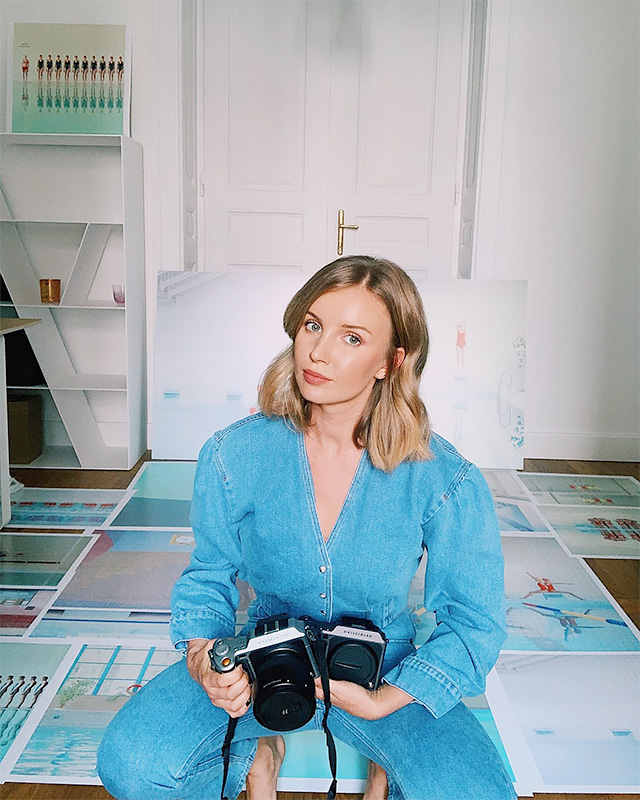Mária Švarbová was born in 1988; she currently lives in Slovakia. Despite studying restoration and archeology, her preferred artistic medium is photography. From 2010 to the present, the immediacy of Maria's photographic instinct continues to garner international acclaim and is setting new precedents in photographic expression. The recipient of several prestigious awards, her solo and group exhibitions have placed her among the vanguard of her contemporaries, attracting features in Vogue, Forbes, The Guardian, and publications around the world; her work is frequently in the limelight of social media. Maria's reputation also earned her a commission for a billboard-sized promotion on the massive Taipei 101 tower, in Taiwan.
Maria's distinctive style departs from traditional portraiture and focuses on experimentation with space, colour, and atmosphere. Taking an interest in Socialist era architecture and public spaces, Maria transforms each scene with a modern freshness that highlights the depth and range of her creative palette. The human body throughout her oeuvre is more or less a peripheral afterthought, often portrayed as aloof and demure rather than substantive. Carefully composed figures create thematic, dream-like scenes with ordinary objects. Her images hold a silent tension that hints at emergent possibilities under the lilt of clean and smooth surfaces.
There is often a sense of cool detachment and liminality in Maria's work. Routine actions such as exercise, doctor appointments, and domestic tasks are reframed with a visual purity that is soothing and symmetrical and at times reverberant with an ethereal stillness. The overall effect evokes a contemplative silence in an extended moment of promise and awareness—a quality difficult to achieve in the rapid pace of modern life. Maria's postmodern vision boldly articulates a dialog that compels the viewer to respond to the mystery, loneliness, and isolation of the human experience. Nevertheless, deeply embedded within the aqueous pastels, Maria's compositions hold to a celebratory elegance that transforms the viewer's gaze into an enduring reverence for life's simple beauty.
Hasselblad Master 2018
Forbes 30 under 30
Winner of International Photography Awards 2016
Swimming Pool
In the Swimming Pool is Maria's largest series yet, originating in 2014 and continuing to develop to date. Sparked by a hunt for interesting location, her fascination with the space of public swimming pools contributed to developing her visual style. Sterile, geometric beauty of old pools set the tone for these photographs. Each of them pictures a different pool, usually built in the Socialist Era, in various locations in Slovakia. There is almost cinematographic quality to the highly controlled sceneries that Maria captures. The figures are mid-movement, but there is no joyful playfulness to them. Frozen in the composition, the swimmers are as smooth and cold as the pools tiles. The colours softly vibrate in a dream-like atmosphere. Despite the retro setting, the pictures somehow evoke a futuristic feeling as well, as if they were taken somewhere completely alien. There is no disturbing emotion, there is no individuality in their stillness. The artificial detachment, created by Maria's visual vision, allows unique visual pleasure, unattainable in real life.
Selected Books on

